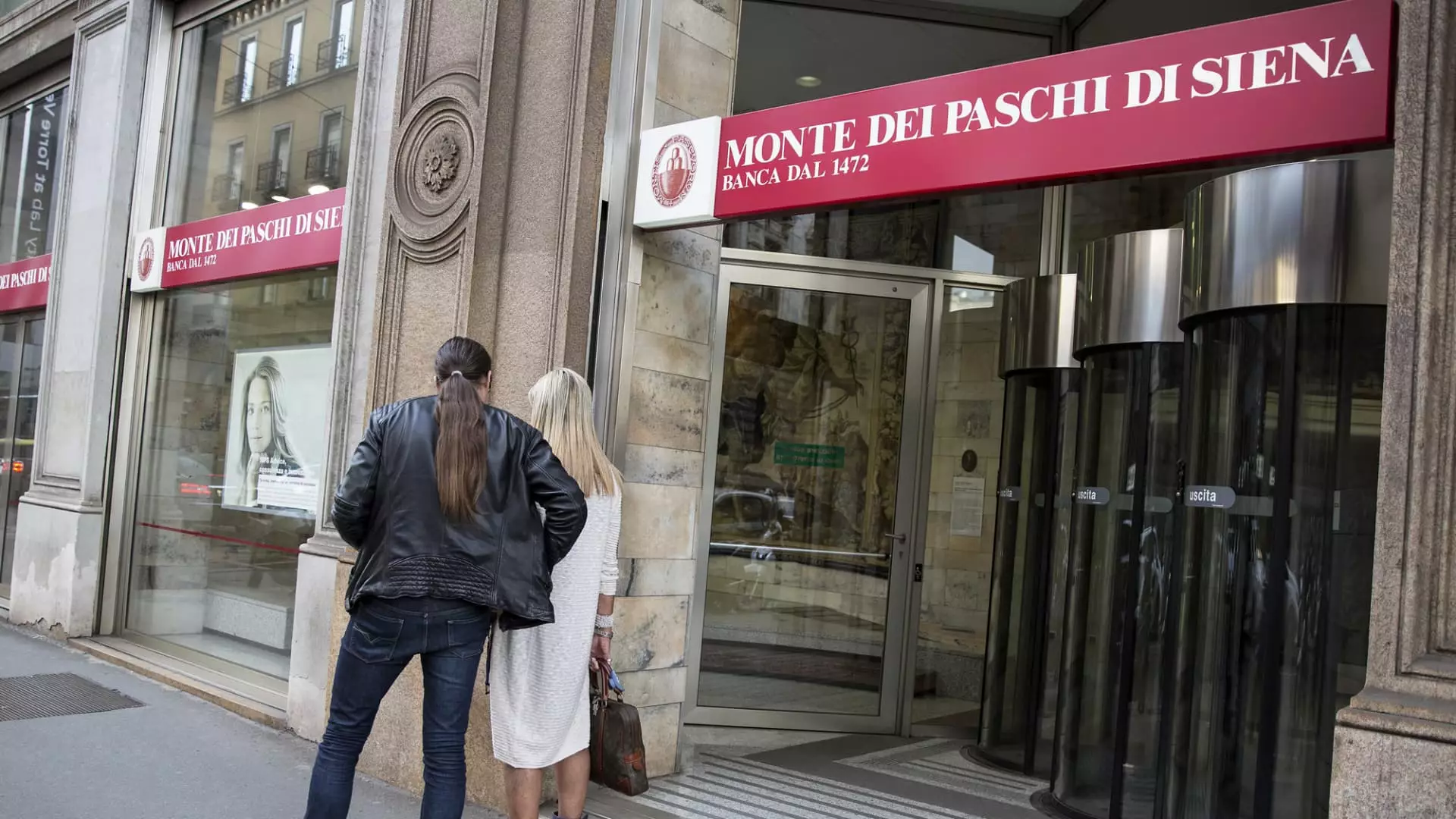In a bold display of confidence, Monte dei Paschi di Siena, the world’s oldest bank, has reiterated its commitment to acquire Mediobanca for a staggering €13 billion ($14.3 billion). This affirmation, made in light of turbulent market conditions, suggests that Monte dei Paschi is unwilling to retreat from its ambitious goals. Executives have projected that the deal will be finalized by July, positioning this acquisition as a crucial element in their strategy to reshape the banking landscape in Italy. This case further highlights the fragility of market sentiment and investor reactions, especially when legacy institutions seek to redefine their operational capabilities.
The all-share offer for Mediobanca was unexpected but not without its repercussions. The established wealth management and investment banking institution promptly rebuffed Monte dei Paschi’s overtures, labeling them as “destructive.” This rejection signals more than just a standoff; it underscores the competitive nature of the financial industry, where mergers and acquisitions can disrupt established hierarchies. Investors are left to ponder the viability of this union as skepticism looms over the potential benefits of such an alliance.
Historical Context: Overcoming Adversity
Monte dei Paschi’s journey is marred by significant challenges, notably its 2017 bailout by the Italian government after failing to secure sufficient funds from private investors. As of now, governmental stake in the bank has dwindled to less than 12%. This history of adversity shapes the current narrative around the acquisition, as the institution attempts to establish a new identity as both resilient and innovative. CEO Luigi Lovaglio’s declaration that “Monte dei Paschi is back” resonates with the overarching theme of recovery and self-determination in the face of prior crises.
Lovaglio is adamant that current market turbulence will not impede Monte dei Paschi’s acquisition strategy. In fact, he argues emphatically that these market fluctuations highlight the necessity for banks to diversify their revenue sources, reinforcing the rationale behind the merger. Such reasoning captures the essence of modern banking; larger entities often wield more influence and resilience amidst economic unpredictability, which could ultimately fortify Monte dei Paschi’s standing in a consolidating industry.
Market Reactions and Divergent Analyst Perspectives
The banking and financial markets are unpredictable beasts, particularly in times of volatility. Recent developments prompted various institutions to re-evaluate previous plans, as evidenced by 3i Group’s postponement of a sale and Klarna’s decision to delay its IPO. Analysts observe contrasting perspectives regarding Monte dei Paschi’s aggressive foray into acquiring Mediobanca. Some, like Deutsche Bank, suggest that the market might be overlooking the nascent opportunities for growth inherent in Monte dei Paschi’s trajectory. Conversely, firms such as Barclays take a more cautious stance, indicating potential risks associated with the merger—namely, the lack of substantial synergies when merging two disparate banking entities.
The concerns expressed in the market are accentuated by a tangible decline in share values for both Monte dei Paschi and Mediobanca. As of the announcement date, shares of Mediobanca have plunged about 14%, while Monte dei Paschi saw a decrease of roughly 8.5%. This data suggests that the announcement itself has stirred apprehension among investors, potentially complicating the acquisition’s path forward. Lovaglio’s responses to questions regarding the motivations of Mediobanca shareholders demonstrate a strategic approach, as he maintains that the offer is compelling and refrains from hinting at any modifications to sweeten the deal.
A Broader Perspective on Italian Banking Consolidation
This acquisition effort occurs within a broader movement toward consolidation in the Italian banking sector. With UniCredit already maneuvering to acquire Banco BPM for around €10 billion, Lovaglio postulates that Monte dei Paschi’s ambitions could reignite a wave of industry consolidation. By merging with Mediobanca, Lovaglio believes that his institution would regain a pivotal role in this evolving landscape.
His assertions suggest a long-term vision, with an anticipatory glance toward a likely second phase of consolidation in the Italian banking system within the next couple of years. Should Monte dei Paschi’s acquisition of Mediobanca succeed, it could catalyze a new chapter in its storied history, allowing it to emerge as a formidable competitor once again. In an era where the market rewards agility and innovation, such a transformation may well be essential for survival and growth in a competitive environment.
Through this lens, the unfolding narrative of Monte dei Paschi’s planned acquisition of Mediobanca is not merely about financial figures but rather a complex interplay of ambition, resilience, and strategic foresight amid an unpredictable economic backdrop.

